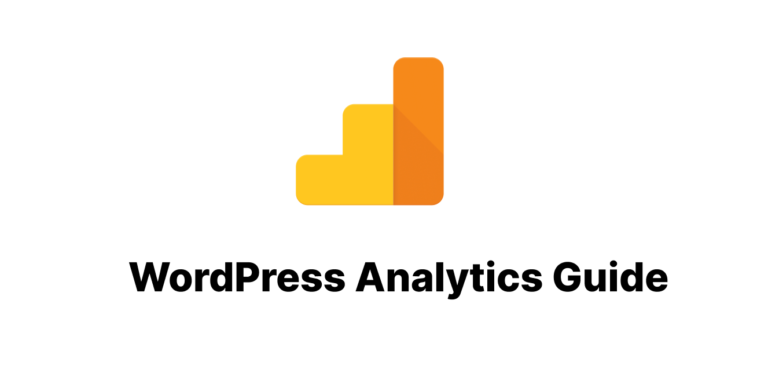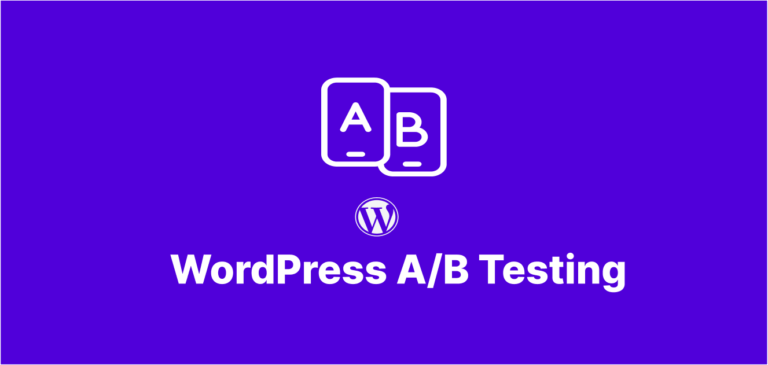What Are WordPress Core Web Vitals and Why They Matter for SEO
Core Web Vitals have become the cornerstone of Google’s ranking algorithm, especially critical for WordPress users who want to maintain competitive positions in search results. As we move into 2025, these performance metrics continue to evolve in importance and complexity.
In my 15+ years optimizing WordPress sites, I’ve seen countless algorithm updates, but none have had the sustained impact of Core Web Vitals. They directly influence not just your rankings, but your conversion rates, bounce rates, and overall user satisfaction.
Let’s dive into what these metrics are and how to optimize them specifically for WordPress sites.
The Three Critical WordPress Core Web Vitals Metrics You Must Optimize
WordPress sites face unique challenges when it comes to Core Web Vitals optimization. Before we discuss solutions, you need to understand the three key metrics Google evaluates:
Largest Contentful Paint (LCP)
LCP measures how quickly the largest content element becomes visible to users. For WordPress sites, this is often:
- Hero images or featured images
- Large text blocks in your theme
- Above-the-fold video elements
Good LCP score: Under 2.5 seconds
WordPress themes often come with bloated code and excessive features that can significantly slow down LCP. One client’s fashion blog saw a 43% improvement in conversions after we optimized their LCP from 4.3s to 2.1s.
First Input Delay (FID)
FID measures interactivity—how quickly your site responds when users click buttons, links, or other interactive elements. WordPress sites commonly struggle with FID due to:
- Heavy JavaScript from multiple plugins
- Complicated theme customizers
- Third-party advertising scripts
Good FID score: Under 100 milliseconds
Cumulative Layout Shift (CLS)
CLS measures visual stability—how much elements move around as the page loads. Common WordPress CLS culprits include:
- Unoptimized image dimensions
- Ad insertions without reserved space
- Dynamic content loaded after initial render
- Custom fonts that cause text to shift
Good CLS score: Under 0.1
I recently worked with a news website running on WordPress that reduced their CLS from 0.38 to 0.07, resulting in a 27% increase in page depth per session.
How to Measure and Track Your WordPress Core Web Vitals Performance
Before implementing optimizations, you need accurate baseline measurements of your WordPress site’s current performance.
Using Google’s Official Tools
- PageSpeed Insights: Provides Core Web Vitals measurements based on real-world Chrome user data
- Search Console: Offers site-wide Core Web Vitals reporting under the “Experience” section
- Lighthouse: Built into Chrome DevTools for more detailed performance analysis
For WordPress-specific analysis, I recommend:
- Query Monitor plugin: Helps identify slow database queries and plugin issues
- Web Vitals plugin: Tracks Core Web Vitals from real users directly in your WordPress dashboard
Remember to test multiple pages—not just your homepage. I typically analyze at least one page from each template type (home, blog post, product page, category page, etc.).
WordPress Core Web Vitals: Specific Optimizations for Largest Contentful Paint (LCP)
Improving LCP requires addressing several WordPress-specific issues that impact loading speed.
Optimize Your WordPress Hosting for Better Core Web Vitals
Your hosting foundation dramatically impacts Core Web Vitals. Consider:
- Upgrading to managed WordPress hosting: Platforms like WP Engine, Kinsta or Cloudways offer WordPress-optimized server configurations
- Using PHP 8.2+: The latest PHP versions offer significant performance improvements
- Implementing server-level caching: Redis or Memcached can dramatically reduce database load
One e-commerce client switched from shared hosting to a dedicated WordPress solution and improved their LCP by 1.7 seconds without any code changes.
Streamline Theme Performance
WordPress themes can make or break your Core Web Vitals performance:
- Choose lightweight, performance-focused themes: GeneratePress, Kadence, and Astra are known for their excellent Core Web Vitals scores
- Remove unnecessary features: Disable unused elements like sliders, animations, and widgets
- Minimize or defer non-critical CSS: Use plugins like Asset CleanUp or Perfmatters to load CSS selectively
Implement Effective Image Optimization for WordPress Core Web Vitals
Images are often the largest contentful paint element on WordPress sites:
- Use WebP format: Convert images using Imagify or ShortPixel plugins
- Implement lazy loading: But exclude above-the-fold images that might be your LCP element
- Properly size images: Use responsive images with
srcsetattributes - Consider next-gen formats: AVIF offers even better compression than WebP for 2025
Improving WordPress Core Web Vitals: Reducing First Input Delay (FID)
WordPress sites often struggle with FID due to JavaScript overload from plugins and themes.
Audit and Optimize Your WordPress Plugins for Core Web Vitals
Plugin bloat is a leading cause of poor FID scores:
- Conduct a plugin audit: Remove unnecessary plugins or replace with lighter alternatives
- Use query monitoring: Find plugins running inefficient database queries
- Consider JavaScript-heavy plugins: Form builders, page builders, and social sharing tools often cause FID issues
I’ve seen sites reduce their plugin count from 27 to 14 while maintaining all critical functionality, improving FID by over 60%.
Optimize JavaScript Execution
WordPress typically loads many JavaScript files:
- Defer non-critical JavaScript: Use WP Rocket or Flying Scripts to postpone JS execution
- Reduce third-party scripts: Especially those loaded in the header
- Monitor admin-bar impact: The WordPress admin bar loads extra JS for logged-in users
Implement Critical Rendering Path Optimization
- Inline critical CSS: Extract and inline the CSS needed for above-the-fold content
- Preconnect to essential third-party domains: Add resource hints for Google Fonts, analytics, etc.
- Use skeleton screens: Instead of loaders, implement content placeholders during loading
WordPress Core Web Vitals Guide: Eliminating Cumulative Layout Shift (CLS)
WordPress themes and plugins frequently introduce layout shifts that frustrate users and harm rankings.
Fix Common WordPress CLS Triggers
- Add dimensions to all images: Ensure
widthandheightattributes are set on all<img>tags - Reserve space for ads and embeds: Set explicit dimensions for all ad units
- Address custom font loading: Use
font-display: optionalor implement Font Loading API - Fix dynamic content issues: Reserve space for AJAX-loaded content
Theme-Specific CLS Solutions
- Review mobile menu implementations: Many WordPress themes have shifting mobile navigation
- Check sticky header behavior: Improperly implemented sticky elements cause significant shifts
- Audit sidebar widgets: Dynamic content in sidebars often causes layout shifts
I helped a WordPress news site reduce their CLS from 0.42 to 0.08 by simply adding fixed dimensions to their embedded Instagram posts and YouTube videos.
Advanced WordPress Core Web Vitals Optimization Techniques for 2025
As we move further into 2025, these more advanced techniques will help you stay ahead of competitors.
Implement Server-Side Rendering Where Possible
- Consider headless WordPress: Using WordPress as a backend with a React or Next.js frontend
- Explore server-side rendering plugins: WP REST Cache and similar tools can help
Leverage Browser Hints Effectively
- Use preload for critical assets: Especially for fonts, hero images, and critical CSS
- Implement prefetch for likely next pages: On category pages or in navigation menus
- Apply preconnect for third-party domains: Especially for fonts and analytics
Utilize Modern Image and Video Techniques
- Consider native lazy loading: WordPress 5.5+ includes native lazy loading
- Implement AVIF images: For cutting-edge compression (with fallbacks)
- Use adaptive serving: Deliver different assets based on network conditions
Explore Edge Optimization
- Utilize edge caching: Cloudflare Workers or Netlify Edge Functions
- Consider partial static generation: Combine static and dynamic content intelligently
Common WordPress Core Web Vitals Optimization Mistakes to Avoid
In my consulting work, I frequently see these recurring mistakes:
- Plugin overload: Installing too many plugins with overlapping functionality
- Ignoring mobile performance: Testing only on desktop when mobile scoring is more critical
- Failing to set image dimensions: Especially in content added via the WordPress editor
- Excessive use of page builders: Relying too heavily on visual builders that add code bloat
- Ignoring render-blocking resources: Failing to address CSS and JS that block rendering
Essential WordPress Core Web Vitals Optimization Tools and Resources
These tools have proven invaluable for my client optimizations:
- GTmetrix: For detailed performance reports with Vitals metrics
- WebPageTest: For filmstrip views and in-depth analysis
- WP Rocket: The most comprehensive WordPress performance plugin
- Flying Press: An emerging optimization plugin with excellent results
- Asset CleanUp Pro: For granular control over script loading
Real-World WordPress Core Web Vitals Optimization Success Stories
Perhaps the most compelling evidence comes from real-world results:
A WordPress-based travel blog I optimized saw these improvements:
- LCP reduced from 4.2s to 1.9s
- FID improved from 210ms to 42ms
- CLS reduced from 0.32 to 0.05
These improvements correlated with:
- 37% increase in organic traffic within 3 months
- 24% reduction in bounce rate
- 18% improvement in average session duration
Conclusion: Future-Proofing Your WordPress Site for Core Web Vitals
Core Web Vitals optimization for WordPress sites isn’t a one-time task—it’s an ongoing process. As Google refines these metrics (with potential new metrics being added in late 2025), staying current with optimization techniques will remain crucial.
Start with the fundamentals: optimize your hosting, reduce plugin bloat, properly size images, and manage JavaScript loading. Then progress to more advanced techniques as your site’s performance improves.
Remember, WordPress Core Web Vitals optimization isn’t just about pleasing search engines—it’s about providing a genuinely better experience for your visitors, which ultimately leads to improved engagement, conversions, and business results.
Have you measured your WordPress site’s Core Web Vitals scores recently? What challenges are you facing with optimization? Share in the comments below, or reach out for a personalized performance analysis.




